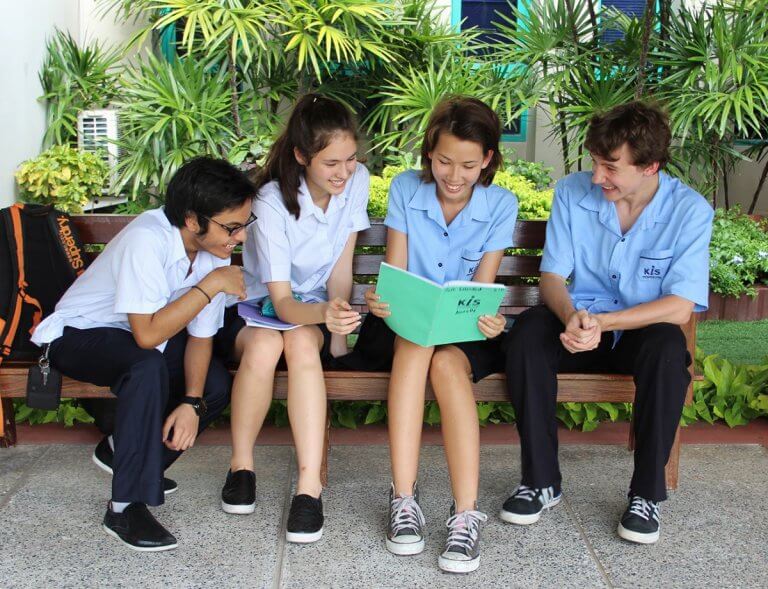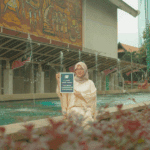
“We provide all our students, from the youngest children stepping into a classroom for the first time, to our graduates heading off to the best universities, with the tools to become life-long learners and successful and responsible global citizens.” – KIS International School
Built on the pillars of Knowledge, Inspiration and Spirit, KIS International School is the perfect launchpad for young dreamers and doers.
Founded 20 years ago near the center of Bangkok, this school has shaped a universal network of leaders and change-makers, offering a personalised learning style that perfectly suits the modern world.
KIS is known as an innovative learning hub, offering respected IB programmes that cater to every age. Learners aged 3-12 study the Primary Years Programme, with a dedicated Early Years Center on hand to nurture 3-5 year-olds.
For those aged 11-16 years, the IB Middle Years Programme will excel your prospects, while for 16-19-year-olds, the IB Diploma Programme will get you set for career and college success.
Recognising that no two children are ever the same, every KIS student is encouraged to bloom in their own unique style and personality. With exceptional academic results, it’s clear that this school has succeeded in its tailored education approach.

“The IB programmes were designed for increased adaptability and mobility of students. No surprise then that there are over a million IB students in over 5,000 IB schools in 146 countries,” the KIS website explains.
“IB students aim to be inquirers, knowledgeable, thinkers, communicators, principled, open-minded, caring, risk-takers, balanced and reflective,” the institution notes. “These attributes make the IB Learner Profile and help our students be successful.”
The school’s dedication to innovation means it sits at the leading edge of contemporary education. Here, gamification makes learning upbeat and engaging, allowing students to get to grips with new and emerging technologies.
Even the KIS prospectus has been breathed new life through an injection of Augmented Reality (AR), introducing students to the concepts and dimensions that define our fast-evolving future.

Imagine living in an intricate world that allowed you to view the inner workings of everything around you whenever, wherever you liked. Well, with KIS’s implementation of AR across the curriculum, students at this school are able to do just that.
“Our ICT program is creating digital layers of the physical world that our students can see by using Android and iOS devices,” the faculty explains.
“For example, in Grade 1 the students are finishing up their fascinating unit of inquiry into body systems. They put on an augmented reality t-shirt while using the iPads to look inside the human body from a 3D perspective. This makes the unit of inquiry come alive for students, giving them a perspective into their classmates’ bodies that they had never seen before!”
And before this captivating module, students were researching the circulatory system, culminating in an experiment that looked into the different functions and components of human blood. The use of AR and hands-on investigations allows for physical connections that link to the real world. It’s a sure-fire way to make science class fun, interesting and incredibly interactive!

But by no means do the school’s ingenious teaching strategies begin and end with AR. The institute understands that joy and gamification can make learning magic happen, acknowledging that transformation can occur when the things students love also double as academic tools.
At KIS, Minecraft for Education is one of these resources. Hugely popular across the globe, Minecraft is a sandbox video game where players create make-believe worlds by mining resources and making devices that can be used to construct buildings on various terrains.
With Minecraft for Education, Grade 2 students use Minecraft to consolidate their understanding of a unit all about States of Matter. It offers a tangible platform which teaches them that ore, such as gold, can be mined and then smelted for the construction of tools, while the furnace used to smelt the ore must be fuelled by coal.

In addition to new and emerging technologies such as Minecraft and AR, Grade 9 students at KIS are learning how to use 3D modeling tools by creating their own unique phone cases. Through the creative technique of design thinking, students identified weaknesses of conventional phone cases and developed new concepts to solve these problems.
After planning their process and sketching their designs, KIS students constructed a 3D representation of their model using Fusion 360 (an industry standard modeling and engineering application). And once this stage was complete, learners created their phone case by using one of the school’s 3D printers.
One KIS Grade 9 student, Viral, wanted to create a phone case that could fly so that anyone can use their phone to take photos and videos from above. Even though his ideas were met with doubt and speculation, Viral continued to carry out his intensive research and used motors and controllers to transform his ingenious case into a drone!

Virtual worlds like these allow students to discover and collaborate, leaning on each other to create something exciting while teaching them social etiquette, problem-solving skills and digital citizenship.
This is 21st century education at its best. This is KIS International School.
Follow KIS International School on Facebook, Twitter, YouTube and LinkedIn
Liked this? Then you’ll love these…
KIS International School: A welcoming global community
4 international schools that are transforming education for the next generation








